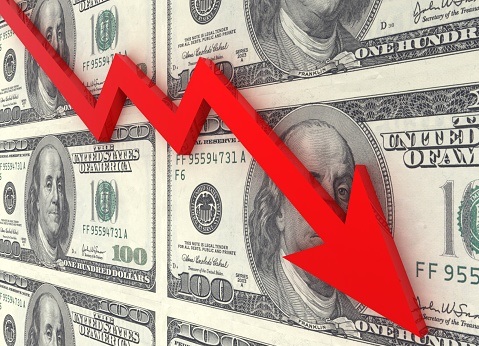Global financial markets have managed thus far to shrug off a more hawkish than expected outturn from last night’s FOMC policy announcement and press conference with Chairman Powell. To recap the meeting; interest rates were held at just above zero and the monthly pace of bond-buying at $120 as expected. New economic forecasts were released and came in largely as expected; the Fed now sees GDP growth in 2021 at 5.9% (a downgrade from their previous view of 7.0%), but the downgrade was somewhat offset by an upgrade to the 2022 growth view, while inflation is now seen at 4.2% in 2021 (an upgrade on the previous view of 3.4%) and at 2.2% in 2022 and 2.1% in 2023. Fed Chair Powell reiterated his usual stance that the spike in inflation in 2021 is seen as transitory (hence why they project inflation falling back towards the 2.0% target in 2022) and again insisted that the end of QE tapering does not automatically signal the start to a rate hiking cycle. With regards to QE tapering, Powell acknowledged that if the labour market recovery continues as expected, it may be appropriate to begin the process soon – markets took this is a nod of approval towards their expectation for Powell to formally announce QE tapering plans in November (and an actual start to QE tapering in December). The hawkish surprises came in two forms; 1) a hawkish dot-plot; the median dot in 2022 rose to 0.3% from 0.1%, implying the likelihood of a rate hike by the year’s end, while the median dots showed rates rising way more sharply than markets had been forecasting to 1.8% by the end of 2024 (a total of seven hikes) and 2) Powell said that it might be appropriate to end the QE taper in mid-2022, near the hawkish end of market expectations as to how quickly the Fed would conduct the taper.
Despite the more hawkish than expected FOMC vibes, US equity markets ended Wednesday’s session with decent gains (S&P 500 +1.0% to the 4390s) and further liquidity injections from the PBoC during Thursday’s Asia Pacific session last night (CNY 60B in both 7 and 14-day reverse repos offer to banks) and hints from state media that China’s LPR (one of the benchmark interest rates there) could fall in Q4 have helped to further lift sentiment this morning; S&P 500 futures are up a further 0.5% and back above the key 4400 level again and the Stoxx 600 is up about 0.8%. That said, global equities are off highs in wake of the release of a now widely circulated WSJ article claiming that the Chinese government is instructing local authorities to prepare for the potential “downfall” of financially distressed property developer Evergrande, which has served to further reduce expectations of direct government intervention to save the company from collapse. In the immediate term, the focus is on the co.’s scheduled repayment of $83M in interest payments on offshore USD bonds today and failure could contribute to a worsening of risk appetite. But markets seem to have calmed down about the broader impact on Chinese and global financial stability and economy should the company collapse; Chinese authorities seem prepared to contain any “contagion” from the huge property developers collapse and FOMC Chairman Powell seemed to echo the sentiment of many US and European based investors that their respective regions have little exposure to the collapse of the Chinese company.
Elsewhere, financial markets have been focused on a barrage of central bank activity, including a further three G10 central bank policy announcements. Starting with the most interesting, the Norges Bank just became the first G10 central bank since the onset of the pandemic to hike interest rates. The bank lifted its policy rate to 0.25% from 0.0% as expected and the bank signalled that another rate hike in December (to take rates to 0.5%) is likely. Sticking with the G10 central banks; we also had rate decisions from the BoE and SNB. The former held interest rates at 0.1% and voted to continue with QE purchases until the total stock of government bonds hits £895B, though two of the nine-man MPC voted to immediately halt purchases. As expected, the BoE maintained its stance that some modest tightening of monetary policy settings over the forecast horizon would be appropriate and said it would be closely monitoring labour market developments in the coming months as the government’s furlough scheme is unwound. The bank noted that base effects are behind the majority of the recent rise in the YoY rate of CPI but did acknowledge the impact of global cost pressures and the fact that measures of medium-term household inflation expectations are at their highest in years.
Meanwhile, the SNB left rates unchanged at -0.75%, pledged to continue with FX interventions and maintained its label of CHF being “highly valued”, all as expected. G10 central bank action does not seem to be having too much influence on G10 FX markets this morning with the price action seemingly being more a determinant of improved risk appetite than anything else. Safe-haven currencies JPY, USD and CHF are the laggards, with the DXY down about 0.3% on the session but still comfortably above 93.00 and, despite the broad weakness in the buck, USDJPY up about 0.2% to above 110.00. Risk/commodity-sensitive currencies are the best performers, with CAD and NOK up over 0.8% versus the buck on the day (with the latter perhaps aided by this morning’s signal from the Norges Bank about a December hike), GBP up 0.7% and unfazed by the BoE and slightly softer than expected flash September PMIs this morning, NZD up 0.6%, AUD and SEK both up about 0.5%. EURUSD is also a tad higher, with EURUSD back above 1.1700 after yesterday’s slip as low as the 1.1680s, a result of USD weakness more than anything else and with the euro shrugging off slightly worse than expected but still, pretty decent Eurozone flash September PMIs from IHS Markit.
More excitement is being witnessed in the EM space; the CBRT made a policy announcement at the same time as the BoE and surprised markets with a cut to their benchmark interest rate to 18.0% from 19.0%, despite the annual rate of CPI rising in August towards 20%. This has triggered a sharp sell-off in the lira, with USDTRY shooting up more than 1.0% from around 8.65 to current levels around 8.75, with the latest surprise rate cut delivering a further blow to the bank’s already obliterated credibility. Up until recently, CBRT Governor Kavcıoğlu has promised that interest rates would be held at levels above inflation, but this pledge has been dropped as of late, with the bank instead focusing on core measures of inflation which are a little lower and have been falling in recent months. Markets had been expecting a rate cut towards the end of the year. Even then, market participants for the most part do not agree that rate cuts this year would even be appropriate and view that the CBRT’s forecasts for a large drop in both core and headline inflation towards the end of the year as overly optimistic. Yet here we have the rate cut already and more are likely on their way into the year-end – that should secure CBRT Governor Kavcıoğlu’s job for the medium term, as Turkish President Erdogan, who has fired three CBRT governors in recent years for being too hawkish, believes lower interest rates are what leads to lower inflation. But it should keep TRY on the back foot, which will, in turn, keep inflationary pressures elevated (as a weaker TRY means imports are costlier). Turkish market participants would do well to expect elevated inflation to persist for as long as President Erdogan is in office, given his constant efforts to undermine the CBRT’s independence and prevent the bank from actually dealing with inflation properly with tighter monetary policy. Inflation falling back to the CBRT’s 5.0% target remains a pipedream.
The Day Ahead
US weekly jobless claims data and July Canadian Retail Sales figures are coming up for release at 1330BST. Focus will then turn to IHS Markit’s flash US PMI surveys for September, which ought to offer a timely update as to the state of the US economy as Q3 progresses – recently released regional Fed manufacturing surveys have pointed to better resilience to the rise in Covid-19 delta infections than expected so far this month. We also have more EM central bank action with the SARB deciding on policy this afternoon.




